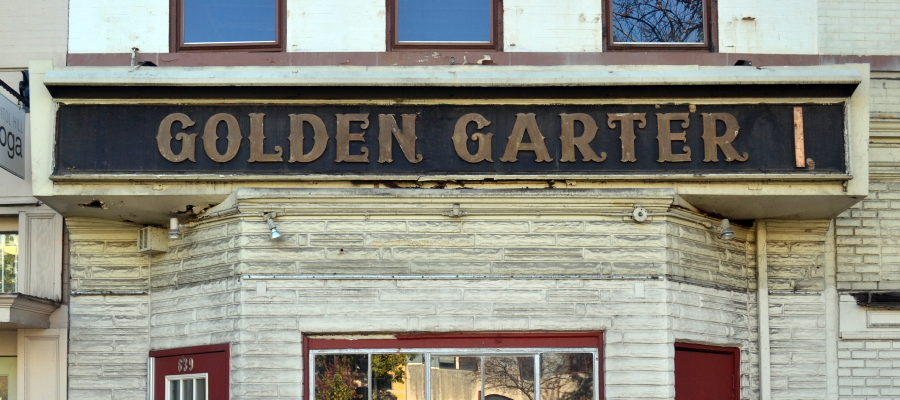 As we continue our look at LGBT history in the runup to the Capital Pride Festival, we will look at some of the bars on Capitol Hill that catered to the LGBT community over the years. According to the Rainbow History Projects walking tour of Capitol Hill, the earliest site was 500 8th Street SE, where Johnnie’s was opened in 1949 as a ‘gay sing-along club.’ Over the years, it housed a variety of other clubs, including the Bachelor’s Mill, which eventually moved down the street to 1104. From 1996 on until recently, it was the site of the Banana Cafe.
As we continue our look at LGBT history in the runup to the Capital Pride Festival, we will look at some of the bars on Capitol Hill that catered to the LGBT community over the years. According to the Rainbow History Projects walking tour of Capitol Hill, the earliest site was 500 8th Street SE, where Johnnie’s was opened in 1949 as a ‘gay sing-along club.’ Over the years, it housed a variety of other clubs, including the Bachelor’s Mill, which eventually moved down the street to 1104. From 1996 on until recently, it was the site of the Banana Cafe.
Two of the other sites that were long-time mainstays of the LGBT scene were 639 Pennsylvania Avenue –Remington’s– and 525 8th Street SE –Phase I.
While 639 Pennsylvania was originally used as a conservatory, pool hall and undertakers, it was not until after prohibition that it became a public house. In 1934, Andrew Dorgan requested permission to open a bar there. He was given a hard time of it, as 639 was close to the schools at the corner of 7th and Pennsylvania. Nonetheless, a restaurant did open there, and throughout the Second World War, Joe Boyle’s Bar and Grill was a mecca for the hungry and thirsty. Boyle also supported a local baseball team, though his civic-mindedness did not extend to actually observing all the ration laws on the books at the time – in 1945, he found himself in trouble for improperly obtaining the food that he was serving.
Nonetheless, the bar managed to survive for another 15 years, succumbing to bankruptcy in 1961. The furnishings were auctioned off, and shortly thereafter, a new bar opened – the Roaring Twenties East. Riding a wave of nostalgia for all things Prohibition, the original Roaring Twenties on Georgia Avenue had been a success, and this was to be transplanted east of the Capitol, as well. It was, according to the Washington Star, an excellent place, its worst aspect being that it was much too tempting a place for a newspaperman leaving the Star after a long day’s work.
Apparently, not enough Star reporters stopped by, because by 1968, the place had become the Golden Garter, and while the Roaring Twenties had “decorative” girls, according to the Star, the new place found itself looking for Go-Go dancers. The place did not last long, and in 1970, Weschler’s auction house – which had previously sold off the Roaring Twenties’ inventory – now was selling off everything from the Golden Garter – including the liquor license.
The location would go through further changes before becoming long-time Hill institution Remington’s.
Currently it is a 7-Eleven and a Sprint outlet.

The old Golden Garter sign exposed after Remington’s closed (RSP)
Phase I was opened by Chris Jansen and Allen Carroll (pictured) in February 1970 and soon became a favorite, drawing patrons from across the greater Washington area. It was, as “Meaghan” wrote in the blog TheNewGay in 2008, a place to which “everyone returns ‘home’ at some point and everyone has planted roots of their own in this bar.”
Phase 1’s situation was not always easy, located as it was on Barracks Row, directly across from the Marine Barracks. There was a notorious incident in October 1979, when a canister of tear gas was thrown in. For a while they felt the need to institute a policy of no unaccompanied men. Nonetheless, of all the many famous and infamous gay and lesbian bars that have sprung up on Seventh Street and around the corner on Pennsylvania Avenue, this one survived the longest. Unfortunately, the end also came for Phase I back in 2016. Carroll offered the bar for sale or lease and the bar did not survive. It most recently housed Anxo’s pop-up Porrón through November of 2017.
More on these two sites at my original pieces on them, published on this site and in the Hill Rag.
